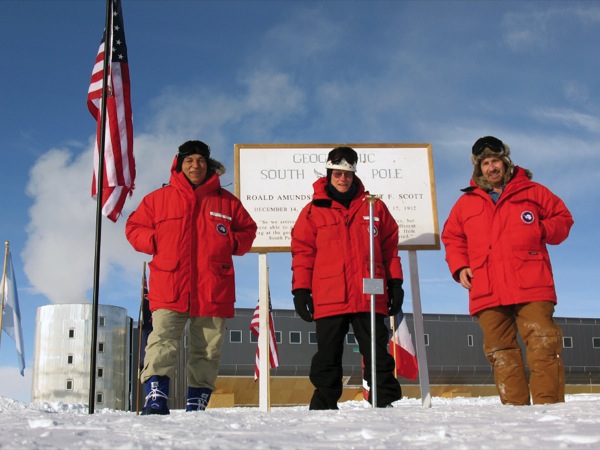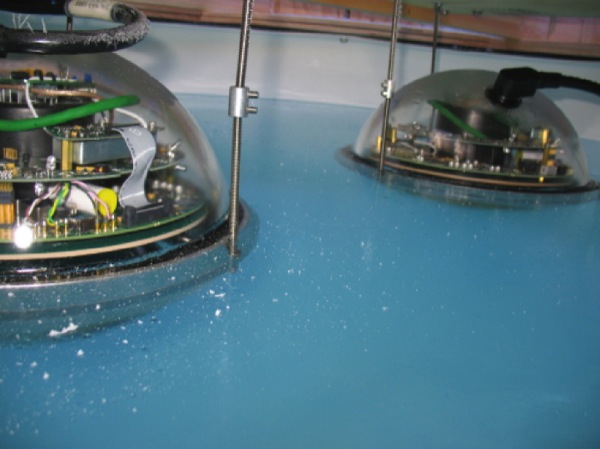


Physics Breakthrough of Year
UD scientists involved in 2013 Breakthrough of the Year in physics
(Editor’s note: Physics World hosted a live Google Hangout with representatives from IceCube, including UD’s James Roth, now at the South Pole, on Friday morning, Dec. 13. Tune in to Physics World's YouTube channel to see a video of that event.)
10:16 a.m., Dec. 13, 2013--The IceCube South Pole Neutrino Observatory, an international scientific collaboration that includes researchers from the University of Delaware, has been awarded the 2013 Breakthrough of the Year by the British magazine Physics World.
The Antarctic observatory has been selected for making the first observations of cosmic neutrinos. These particles, the “high-energy messengers of the universe,” zip through space and may yield important clues to the origins of the universe.
Research Stories
Chronic wounds
Prof. Heck's legacy
The IceCube team also was recognized for overcoming the many challenges of creating and operating a colossal detector deep in the ice at the South Pole.
“The ability to detect cosmic neutrinos is a remarkable achievement that gives astronomers a completely new way of studying the cosmos,” says Hamish Johnston, editor of physicsworld.com. “The judges of the 2013 award were also impressed with the IceCube collaboration’s ability to build and operate a huge and extremely sensitive detector in the most remote and inhospitable place on Earth.”
IceCube is composed of 5,160 sensors called digital optical modules suspended along 86 cables embedded in a cubic kilometer of ice beneath the South Pole. It detects neutrinos through the tiny flashes of blue light, called Cherenkov light, produced when these tiny particles interact in the ice.
During IceCube’s construction from 2003 to 2010, temperatures typically hovered around -40° Fahrenheit, according to Tom Gaisser, the Martin A. Pomerantz Chair of Physics and Astronomy at the University of Delaware.
“It was really cold and dry, but the living conditions actually were very good,” says Gaisser. “The National Science Foundation has a warehouse in Christchurch, New Zealand, that makes sure you have all the warm clothes you need before you get on the plane to the South Pole.”
Gaisser and his UD team were responsible for installing “IceTop,” the surface array of detectors on IceCube. Their challenge was to freeze digital optical modules into tanks that form IceCube’s “eyes” on the surface while keeping the ice free of air bubbles.
Since the project was completed in 2010, UD senior electronics instrumentation specialist James Roth has traveled to South Pole each year to maintain the IceTop tanks. Some are covered in two to three feet of snow, while other tanks are entirely snow-free and a few have even more snow cover. Measurements of snow depth allow corrections to be made to measured signals.
The University of Delaware has a long history of research in Antarctica. The late Martin A. Pomerantz, former director of the University’s Bartol Research Institute, pioneered the use of the South Pole as a laboratory for studying astronomy and astrophysics. Astrophysical studies continue in Martin A. Pomerantz Observatory (affectionately known as MAPO, pronounced “maypo”), which the National Science Foundation dedicated at the South Pole in 1995.
IceCube was built under an NSF Major Research Equipment and Facilities Construction grant with assistance from partner funding agencies around the world. The lead institution is the University of Wisconsin. The collaboration includes 275 physicists and engineers from the U.S., Germany, Sweden, Belgium, Switzerland, Japan, Canada, New Zealand, Australia, U.K., Korea and Denmark.
Article by Tracey Bryant









